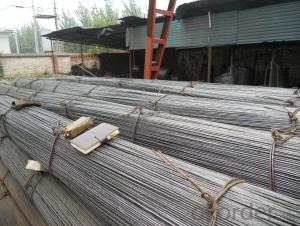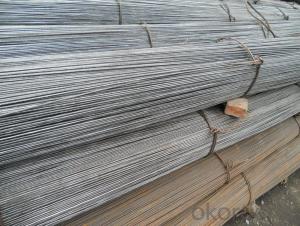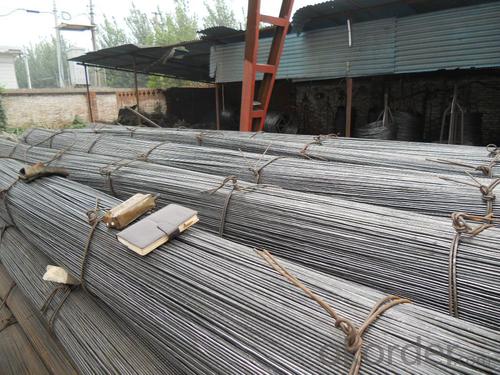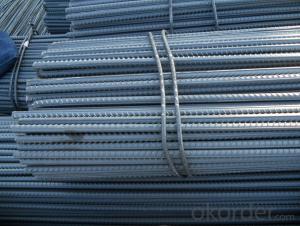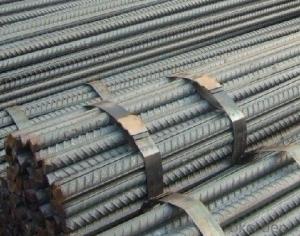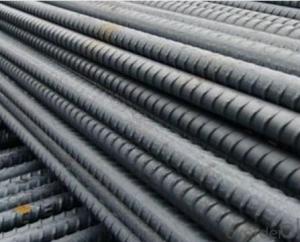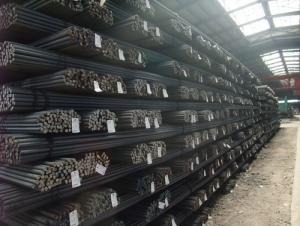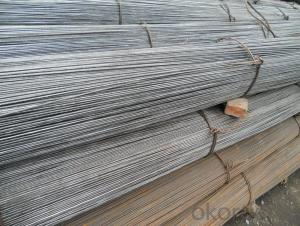rebar steel 6mm/hot rolled deformed steel rebar
- Loading Port:
- Tianjin
- Payment Terms:
- TT OR LC
- Min Order Qty:
- 25 m.t.
- Supply Capability:
- 23000 m.t./month
OKorder Service Pledge
OKorder Financial Service
You Might Also Like
Specifications
1.Standard: BS4449,HRB400 ,ASTM A 615, GR460B
2.Dia: 6-32 mm
3.Usage: for building,etc
4.MOQ:25 tons
Steel rebar
a.Length: 9m,12m
b.Diameter: 6-32 mm
c.standard: JIS/ASTM/BS/GB
d.material: HRB335/HRB400
Deformed Steel Rebars | |
OD | 10-32mm |
Length | 6-13.5m |
Standard | ASTM ,SB,GB and so on |
Grade | A 615 Gr40,A 615 Gr60,A 615 Gr75 BS4449 Gr 460 HRB 335,HRB 400,HRB 500 |
Application | Building construction |
Market | Middle east, North/South America, Europe, Asia,Africa etc |
Certificate | BV,SGS,MTC |
Delivery time | Within 30-45 days |
Payment terms | TT,L/C |
Package | Seaworthy packing or as your required |
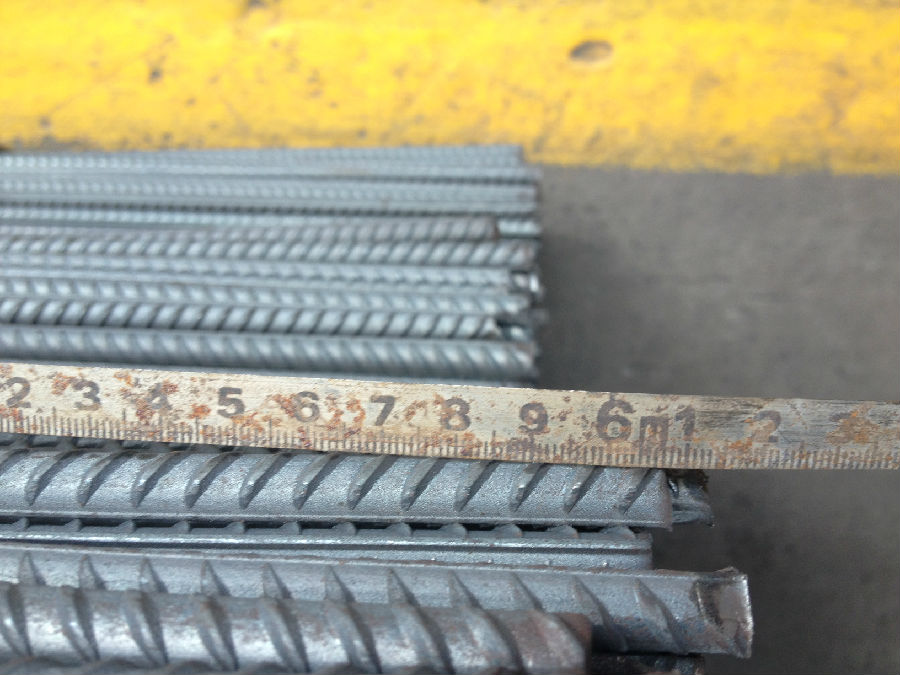

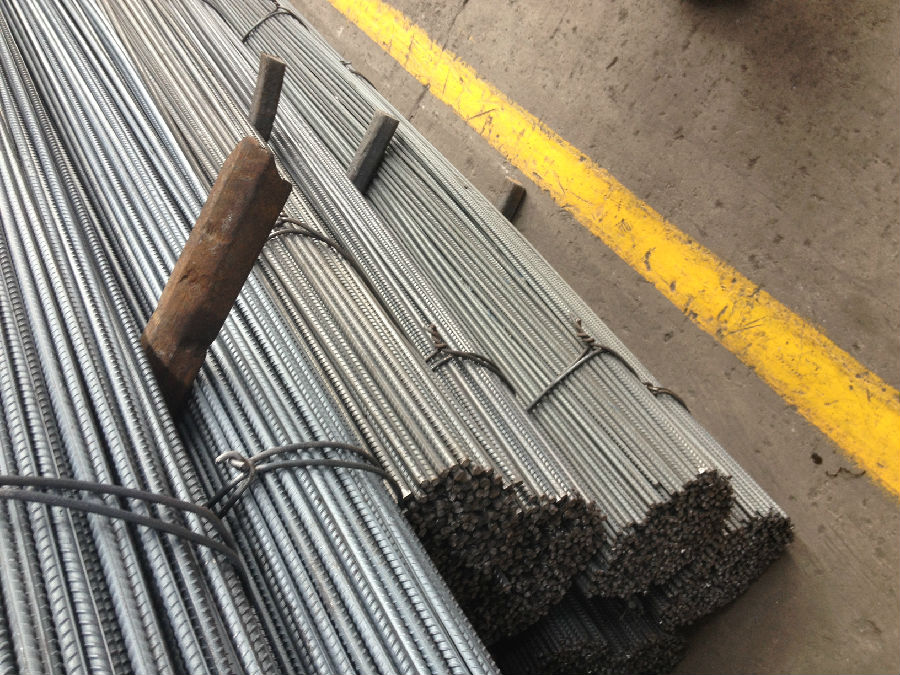
- Q: Can steel rebars be used in tunnel boring machine (TBM) construction?
- Yes, steel rebars can be used in tunnel boring machine (TBM) construction. Rebars are commonly used in the construction industry to reinforce concrete structures, including tunnels constructed using TBMs. The purpose of using rebars is to provide additional strength and durability to the concrete lining of the tunnel. These rebars are typically placed within the concrete lining during the construction process to enhance its structural integrity and ability to withstand external forces. In TBM construction, the rebars are carefully positioned and secured to ensure proper reinforcement throughout the tunnel. Therefore, steel rebars play a crucial role in the construction of tunnels using TBMs.
- Q: Can steel rebars be used in the construction of nuclear power plants?
- Yes, steel rebars can be used in the construction of nuclear power plants. Steel rebars are commonly used as reinforcement in concrete structures, including those in nuclear power plants. They provide strength and stability to the concrete, ensuring the integrity of the structure. However, specific regulations and standards must be followed to ensure the rebars meet the required quality and safety standards for nuclear facilities.
- Q: How do steel rebars affect the overall stability of a structure?
- The overall stability of a structure is greatly impacted by steel rebars, also known as reinforcing bars. These rebars play a crucial role in enhancing the stability and durability of a structure, especially concrete structures. One way in which steel rebars affect the stability of a structure is by strengthening the concrete against tensile forces. While concrete is strong when it comes to compressive forces, it is relatively weak in resisting tension. Steel rebars, with their high tensile strength, help to counteract this weakness by absorbing and distributing tensile forces throughout the structure. This prevents the concrete from cracking or collapsing under excessive tensile loads, resulting in enhanced stability. Furthermore, steel rebars also contribute to the structural stability by improving the flexural strength of a structure. Flexural strength refers to a structure's ability to withstand bending or flexing without deforming or failing. By incorporating steel rebars into reinforced concrete beams, columns, or slabs, the overall flexural strength of the structure increases significantly. This prevents excessive deflection and ensures the structure can bear the various loads it faces, such as the weight of the building, live loads, or external forces. In addition, steel rebars play a vital role in resisting shear forces, which occur when different parts of a structure slide or move in opposite directions. These shear forces can lead to structural failure if not properly addressed. Steel rebars, when correctly positioned and secured, restrain the concrete from shearing, thus preventing potential collapse or instability. Moreover, steel rebars also enhance the stability of a structure by improving its resistance to seismic forces. In areas prone to earthquakes, the inclusion of steel rebars provides the necessary ductility and energy dissipation capacity to withstand seismic activity. Acting as a network of interconnected elements, the rebars distribute the seismic forces and ensure the structure remains stable during an earthquake. In conclusion, steel rebars have a significant impact on the overall stability of a structure. Their inclusion reinforces concrete against tensile forces, enhances flexural strength, resists shear forces, and improves resistance to seismic activity. By increasing the strength, durability, and integrity of a construction, steel rebars ensure that a structure can withstand various loads, forces, and potential hazards, ultimately enhancing its overall stability.
- Q: What are the guidelines for the proper anchoring of steel rebars in walls?
- The proper anchoring of steel rebars in walls is crucial to ensure the structural integrity and stability of the construction. Here are some guidelines to follow for the correct anchoring of steel rebars in walls: 1. Determine the required rebar size and spacing: The size and spacing of rebars depend on the design specifications and load requirements. Consult the structural engineer or refer to the building codes for the appropriate rebar size and spacing. 2. Clean and prepare the concrete surfaces: Before anchoring the rebars, ensure that the concrete surfaces are clean, free from dust, debris, and any loose material. Use a wire brush or compressed air to remove any contaminants. 3. Use proper anchoring techniques: The most common method for anchoring steel rebars in walls is by embedding them into the concrete. Ensure that the rebars are securely embedded by following these steps: a. Drill holes: Drill holes in the concrete wall at the specified locations and depths, ensuring that the diameter of the hole matches the rebar size. b. Clean the drilled holes: Remove any dust or debris from the drilled holes using compressed air or a brush. c. Insert rebars: Insert the rebars into the drilled holes, making sure they reach the required embedment depth. d. Proper spacing: Maintain the specified spacing between rebars based on the design requirements. e. Secure rebars: Use appropriate anchoring materials like epoxy resin or grout to secure the rebars in place. Follow the manufacturer's instructions for mixing and applying the anchoring material. f. Ensure proper alignment: Verify that the rebars are correctly aligned, both horizontally and vertically, before the anchoring material sets. 4. Allow sufficient curing time: After anchoring the rebars, allow sufficient time for the anchoring material to cure. This ensures that the rebars are firmly secured in place. 5. Properly protect the rebars: Once the rebars are anchored, protect them from corrosion by applying a suitable corrosion-resistant coating or using corrosion-resistant rebars. It is essential to follow these guidelines, as improper anchoring of steel rebars can compromise the structural integrity of the walls and pose safety risks. Always consult with a qualified structural engineer or building professional for specific guidelines tailored to your project.
- Q: What are the precautions to be taken while welding steel rebars?
- When welding steel rebars, there are several precautions that need to be taken. First and foremost, it is crucial to wear appropriate personal protective equipment such as a welding helmet, gloves, and a protective apron to shield against sparks, heat, and UV radiation. Additionally, proper ventilation in the work area is necessary to prevent the accumulation of harmful fumes and gases. It is important to ensure that the rebar is clean and free from any contaminants or coatings that could affect the quality of the weld. Welding should only be performed by trained and qualified individuals who understand the specific techniques and settings required for welding rebars. Finally, regular inspections of the welds should be conducted to ensure their integrity and strength.
- Q: What is the lifespan of steel rebars in different environments?
- The lifespan of steel rebars can vary depending on the environment they are exposed to. In general, steel rebars have a long lifespan and can last for many decades in most environments. However, in harsh or corrosive environments such as coastal areas with high salt content or industrial areas with chemical exposure, the lifespan may be reduced. Proper maintenance and protective measures, such as coatings or cathodic protection, can significantly increase the lifespan of steel rebars in these environments.
- Q: What are the advantages of using deformed steel rebars?
- There are several advantages of using deformed steel rebars in construction. Firstly, the deformations on the surface of the rebars create a strong bond with the surrounding concrete, enhancing the overall structural integrity of the reinforced concrete. Secondly, the rough surface of the rebars provides increased resistance against slipping, preventing potential failures due to movement or seismic activities. Additionally, deformed rebars offer improved load-bearing capacity, enabling them to withstand higher loads and stresses compared to plain steel rebars. Lastly, the increased ductility of deformed rebars allows for better absorption of energy during earthquakes or other dynamic forces, making them a reliable choice for seismic zones.
- Q: Can steel rebars be used in parking structure construction?
- Yes, steel rebars can be used in parking structure construction. Steel rebars provide strength and reinforcement to concrete structures, making them ideal for supporting the weight of vehicles and ensuring the durability and stability of parking structures.
- Q: How long do steel rebars typically last?
- Steel rebars typically have a long lifespan and can last for several decades. The exact duration of their lifespan depends on various factors, such as the quality of the rebar, the environmental conditions it is exposed to, and the maintenance practices implemented. Generally, steel rebars are designed to be resistant to corrosion, which is one of the main factors that can affect their longevity. However, over time, rebars may experience some corrosion due to exposure to moisture, chemicals, or other corrosive agents. This can potentially reduce their lifespan. Regular inspections, maintenance, and the application of protective coatings can help extend the lifespan of steel rebars. With proper care, steel rebars can typically last 30 to 50 years or even longer.
- Q: Can steel rebars be used in power plant construction?
- Yes, steel rebars can be used in power plant construction. Steel rebars are commonly used as reinforcement in concrete structures, including power plants, to enhance their strength and durability.
Send your message to us
rebar steel 6mm/hot rolled deformed steel rebar
- Loading Port:
- Tianjin
- Payment Terms:
- TT OR LC
- Min Order Qty:
- 25 m.t.
- Supply Capability:
- 23000 m.t./month
OKorder Service Pledge
OKorder Financial Service
Similar products
Hot products
Hot Searches
Related keywords
